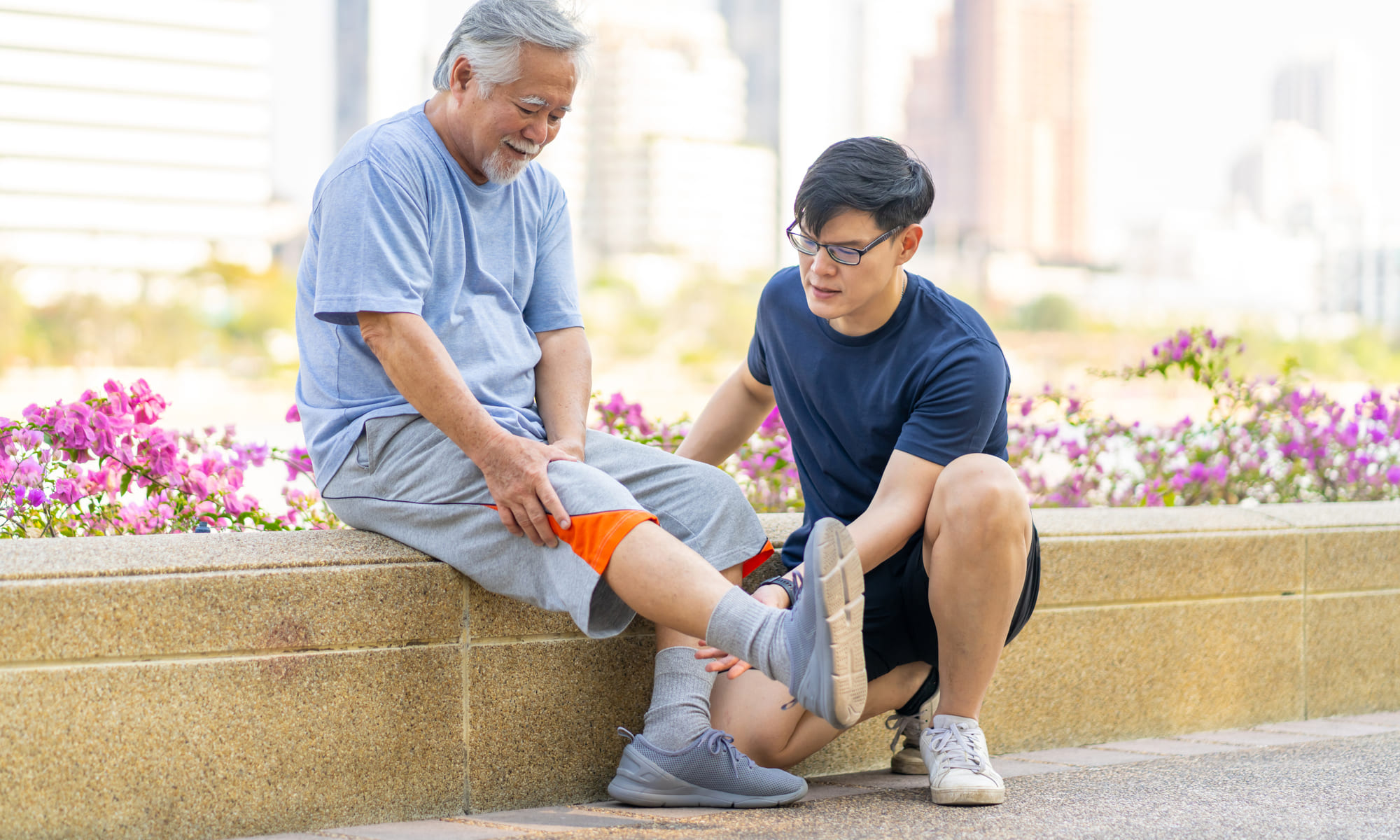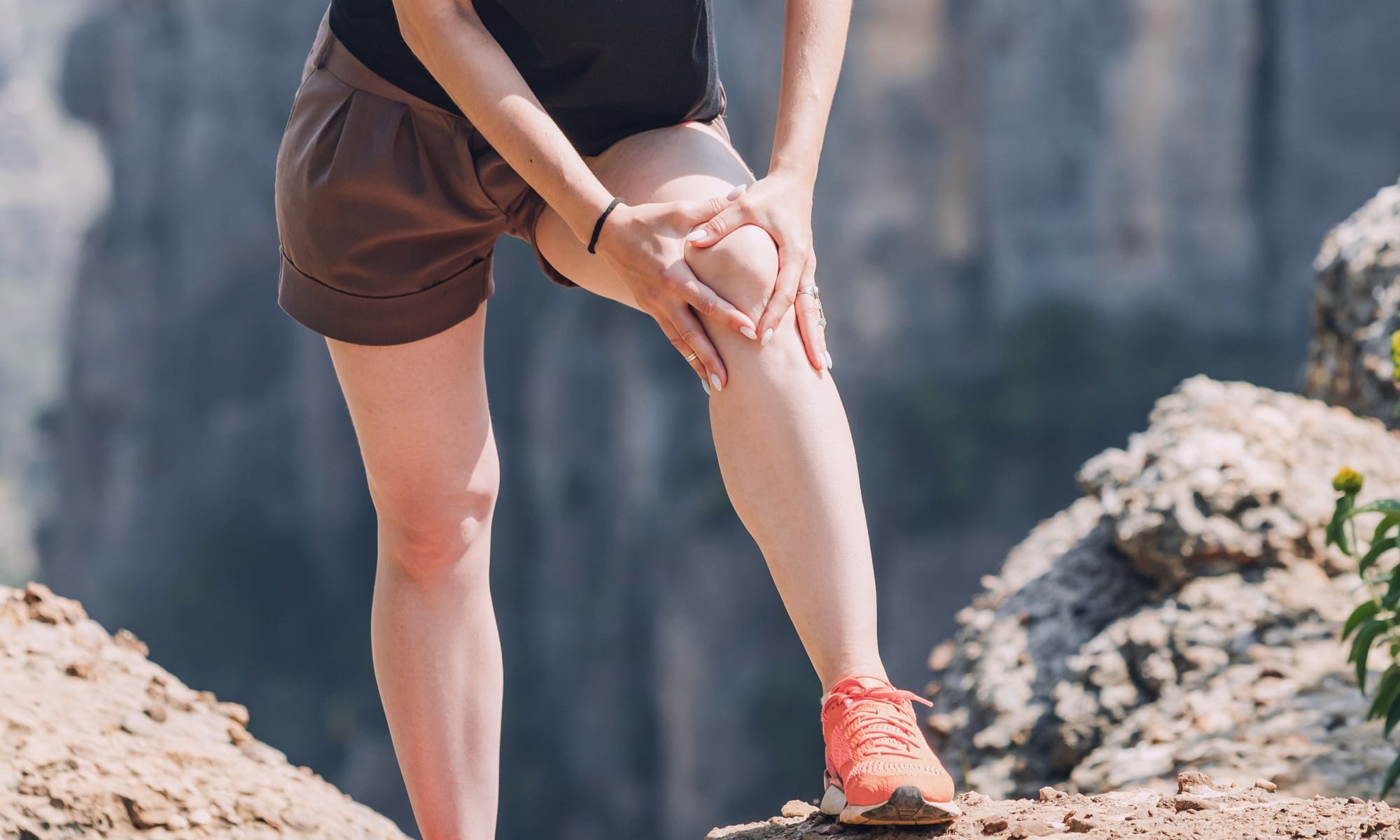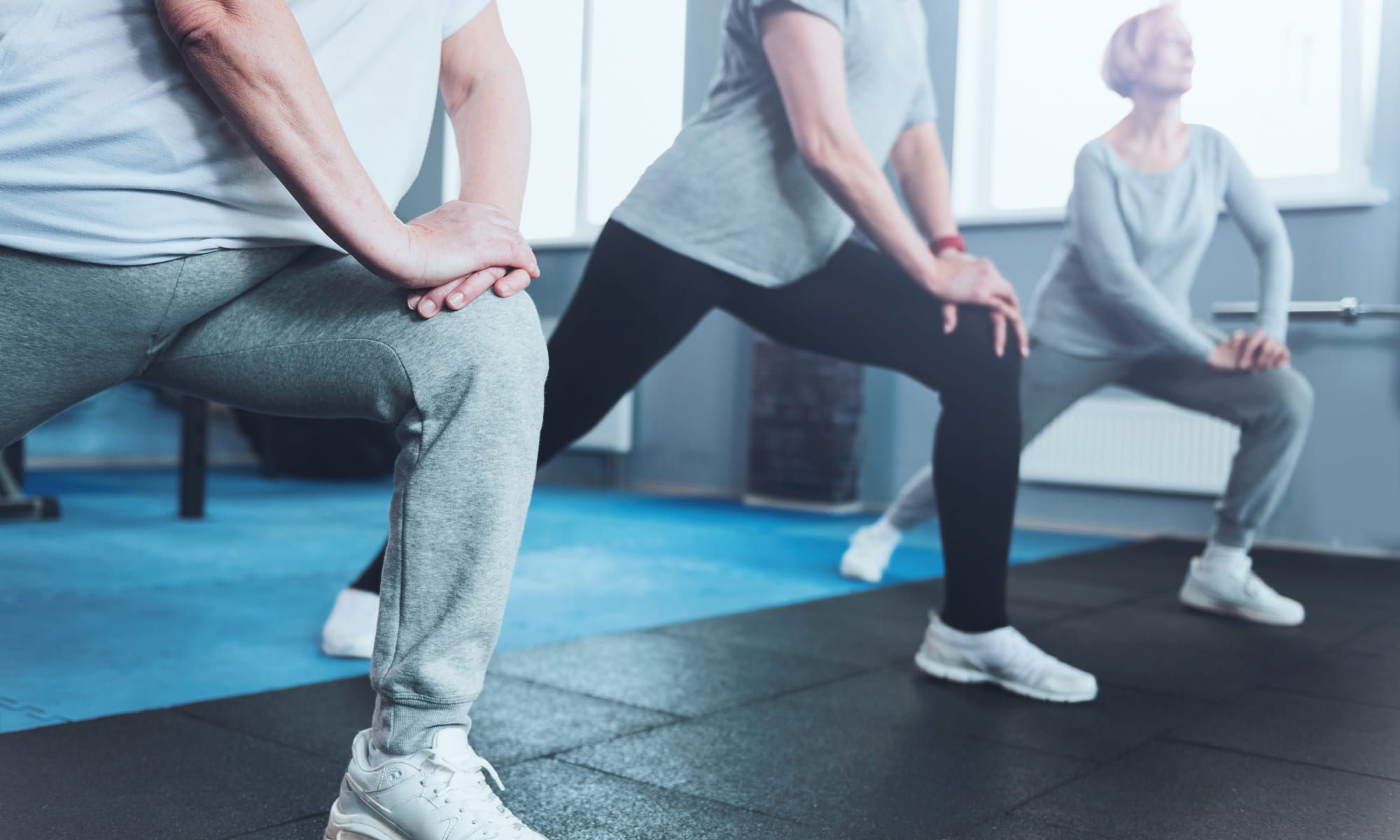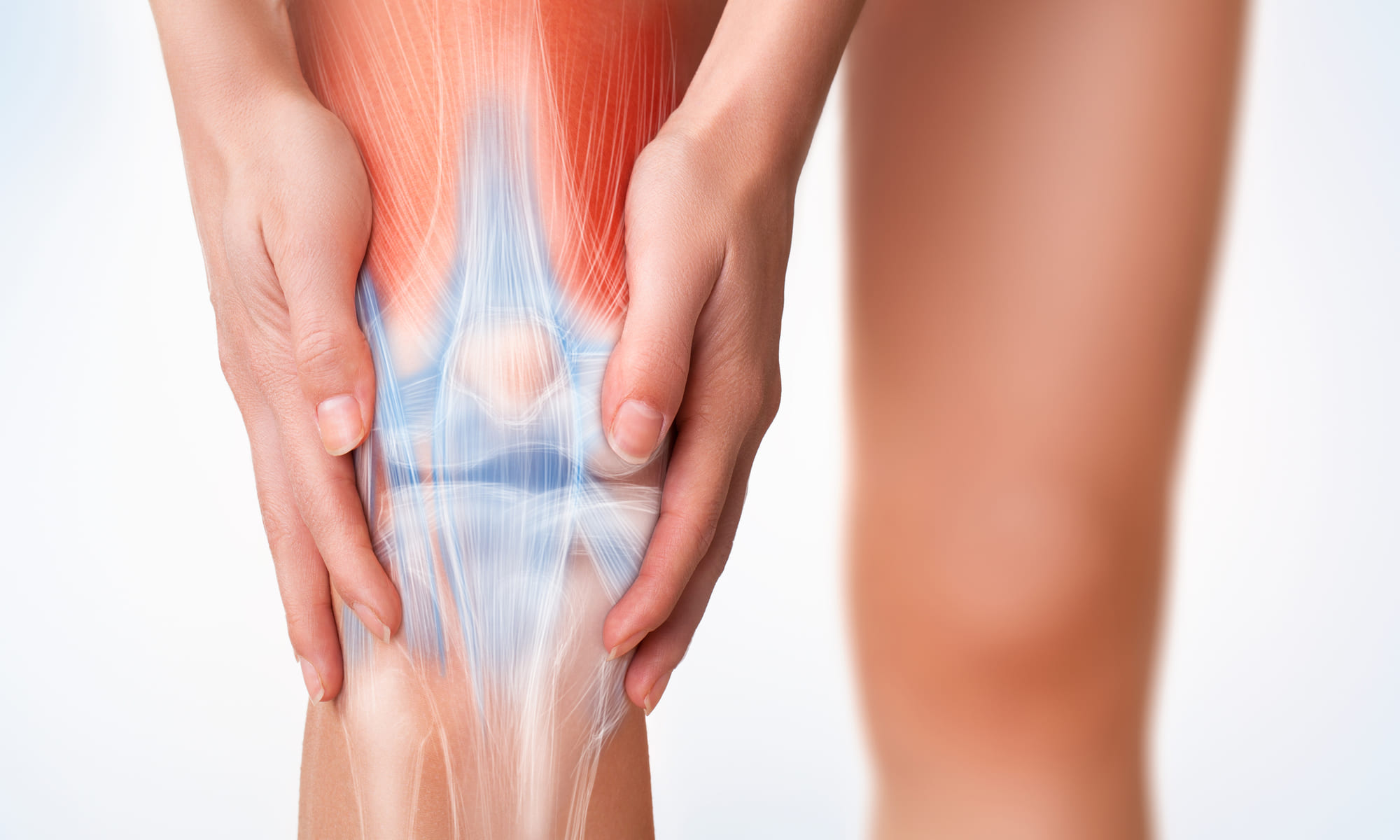Top Categories
Runner’s Knee, medically known as patellofemoral pain syndrome, is a common condition among runners of all ages. It is characterised by pain around the kneecap and is particularly prevalent in individuals who engage in activities that put repeated stress on the knee joint, such as running. As runners age, understanding the causes, symptoms, and management of Runner’s Knee can help older runners continue their passion for running while maintaining good knee health and preventing injury.
Common Symptoms
Pain around or behind the kneecap: This is the most common symptom of Runner’s Knee. The pain often starts as a dull, aching sensation around or behind the kneecap (patella). It may initially occur only when running, kneeling, or climbing stairs, activities that put additional stress on the knee. As the condition progresses, the pain may become more constant and severe.
Swelling around the knee: Inflammation from the irritated or injured structures in the knee can lead to swelling. This may be noticeable as a puffiness around the kneecap or a feeling of tightness in the knee. The swelling may increase after running or other physical activities.
Grinding or clicking sensation in the knee: Some people with Runner’s Knee may notice a grinding or clicking sensation when they move their knee, especially when bending or straightening it. This is caused by the roughened, damaged surfaces of the cartilage under the kneecap rubbing against each other or against other parts of the knee joint.
Knee stiffness, particularly after sitting for extended periods: Stiffness in the knee is another common symptom of Runner’s Knee. After sitting for a long time, such as at a desk or during a long car ride, the knee may feel stiff and uncomfortable when you first stand up and start to move. This is often described as a “locking” or “catching” sensation in the knee.
Causes that lead to Runner’s Knee
Overuse: Running is a high-impact activity that places significant stress on the knee joint. Each time your foot strikes the ground, your knee absorbs a force equivalent to about eight times your body weight. Over time, this repeated stress can lead to irritation and inflammation in the structures around the kneecap. This is particularly common in individuals who suddenly increase their running distance or intensity without giving their body adequate time to adapt.
Direct trauma: Injuries to the knee, such as those caused by falls or blows, can damage the structures of the knee and cause bruising or damage to the cartilage or ligaments in the knee. These injuries can alter the normal functioning of the knee and result in pain and other symptoms of Runner’s Knee.
Running form: An incorrect running technique can lead to imbalances and injuries in the knee over time. Working with a running coach or physiotherapist can help correct these issues and reduce the risk of Runner’s Knee.
Potential Risks of Runner’s Knee
Chronic Pain: The pain associated with Runner’s Knee can become chronic, affecting daily activities and reducing quality of life. This can be particularly problematic for older individuals who may already be dealing with other age-related health issues.
Reduced Mobility: Persistent pain and stiffness in the knee can lead to a decrease in mobility, making it difficult to fully bend or straighten the knee. This can impact an older person’s ability to perform daily tasks and maintain independence.
Reduced Physical Activity: The discomfort caused by Runner’s Knee can discourage older individuals from maintaining an active lifestyle. This can lead to a decrease in overall physical fitness for maintaining health and preventing conditions such as heart disease and osteoporosis in older age.
Progression to Osteoarthritis: If left untreated, Runner’s Knee can potentially lead to osteoarthritis in the knee, a more serious condition that causes joint pain and stiffness. Osteoarthritis is more common in older adults and can significantly impact mobility and quality of life.
Increased Risk of Falls: Altered balance or gait due to knee pain can increase the risk of falls in older adults. Falls are a major health risk for older individuals, potentially leading to serious injuries like fractures.
How Age Influences Runner’s Knee
Cartilage Wear and Tear: Cartilage is a smooth tissue that cushions the bones of the knee joint, allowing them to glide smoothly against each other. With age, this cartilage naturally becomes thinner and less resilient, making it more susceptible to damage. This wear and tear can lead to pain and stiffness in the knee, characteristic symptoms of Runner’s Knee.
Muscle Strength and Flexibility: Muscle strength and flexibility tend to decrease with age. This can affect the stability of the knee joint and the way forces are distributed across it during running. For example, weaker thigh muscles may not adequately support the knee, leading to increased stress on the joint and a higher risk of Runner’s Knee.
Bone Density: Bone density decreases with age, which can make the bones of the knee joint more susceptible to stress fractures and other injuries. These injuries can alter the normal functioning of the knee and contribute to the development of Runner’s Knee.
Effects of Osteoarthritis for Older Runners
Osteoarthritis, a condition that causes joint pain and stiffness, becomes more common with age.The cartilage in the joint wears down over time, leading to symptoms such as pain, swelling, and reduced range of motion.
For older runners, osteoarthritis can contribute to knee pain in several ways:
Joint Degeneration: Osteoarthritis causes cartilage breakdown in the knee, leading to bone-on-bone contact. This results in pain and stiffness, making running harder and increasing the risk of Runner’s Knee.
Inflammation: Osteoarthritis can cause knee inflammation, intensifying the pain and swelling associated with Runner’s Knee and reducing range of motion.
Altered Biomechanics: Structural changes in the knee from osteoarthritis can affect knee function during running. This can lead to improper running form and increased knee stress, potentially heightening the risk of Runner’s Knee.
Prevention and Management of Runner’s Knee for Older Runners
Importance of Correct Running Technique: Upholding a correct running form includes an upright posture, a light landing starting from the heel rolling onto the toe, and ensuring the knees align properly with each stride. This technique helps distribute the impact of each step across the entire foot and lower leg, reducing the amount of stress placed directly on the knees.
Strength Training: Regular strength training, especially exercises targeting the hips and thighs, can support the knee joint. Strong muscles can absorb some of the forces that would otherwise stress the knee, reducing the risk of Runner’s Knee. Beneficial exercises include squats, lunges, and leg presses.
Proper Footwear: Shoes should provide good support, particularly in the arch and heel, to maintain proper foot alignment. They should fit well to avoid altering running mechanics. Regularly replacing worn-out shoes is also important, as they can lose their cushioning and support over time.
Conclusion
Older runners can manage their risk of Runner’s Knee by maintaining correct running form, performing regular strength training, and using suitable footwear. These measures can help older runners continue their running activities while reducing the risk of developing Runner’s Knee.



